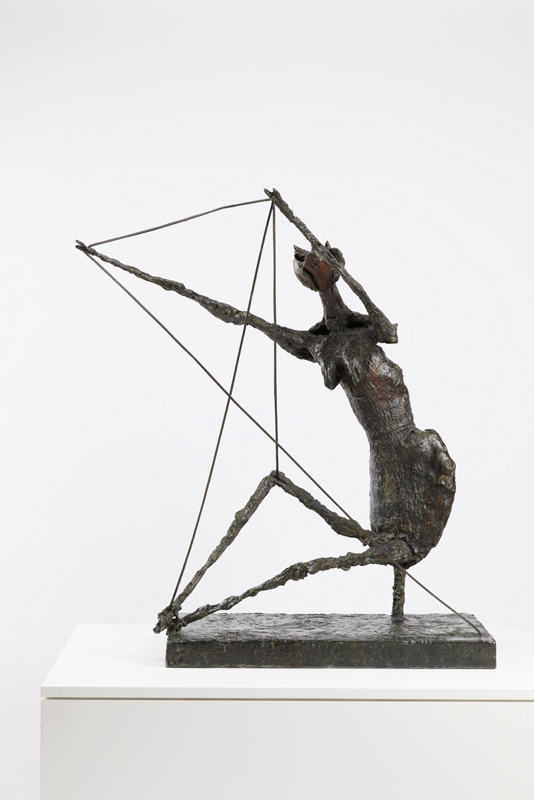Watch, Read, Listen
Recent Additions to the Collection MOMAT Collection Newsletter of the National Museum of Modern Art, Tokyo Germaine Richier, The Ant, 1953
Back
The Ant
Bronze with patina
99.0 × 88.0 × 66.0 cm
Purchased 2022
Photo by Otani Ichiro
On a rectangular base sits a creature resembling a fusion of a human female and an ant, its arms stretched upward. In anatomical terms, it does not have an ant’s six legs extending from the thorax, but rather two arms and two legs like a human being. These limbs, however, are extremely thin and end in branched claws, like the legs of an ant. Richier referred to sculptures like this one, which combine human forms with elements of plants, animals, or insects, as “hybrids.”
Strictly speaking, the creature is not seated directly on the base. Instead, its body is supported by a thin rod extending from the base to the junction of legs and torso. From the back, the separation of thorax and abdomen is clearly visible, with stripes on the abdomen further heightening the figure’s ant-like qualities. Small horn-like protrusions on the head might be seen as an ant’s antennae, but these were actually inspired by tridents traditionally used by mounted herdsmen in Camargue, near Richier’s hometown in southern France.
In addition to its form, another unique feature of this sculpture is the network of wires connecting the tips of its hands and feet, right knee, and a corner of the base. The wires form neat triangles that contrast with the roughly sculpted volumes of the hybrid figure’s body. While the wires appear to support the creature’s raised arms, their aesthetic function seems to outweigh their structural necessity. They render the space around the sculpture visible, while simultaneously emphasizing and restricting the ant-woman’s movement.
Richier studied bronze sculpture under Emile-Antoine Bourdelle (1861–1929) in Paris in the late 1920s. During a six-year stay in Zurich during World War II, she began sculpting hybrids of human figures and plants or animals. She also produced human figures marked by holes, cracks, and rough surfaces, conveying instability and imbalance that departed from the French sculptural tradition extending from Auguste Rodin to Bourdelle.
Sculptor Tsuchitani Takeshi (1926–2004) described the inherent instability of Richier’s works: “Richier’s sculpture looks contemporary in terms of her approach to movement and equilibrium… Forms that appear about to collapse, maintaining precarious balance through infusion with the potential for subsequent movement, are unimaginable in the classical tradition.”1 This quality of instability also distinguishes Richier from her contemporary Alberto Giacometti (1901–66). While Giacometti’s elongated figures also feature rough, pitted surfaces, they maintain upright stances or stride confidently. When sculptural history is viewed through the lens of unstable movement and posture, Richier’s work appears strikingly innovative. The barely held balance that defines her work is palpable in the strange pose of The Ant, framed and suspended by wires.
[Notes]
1. Tsuchitani Takeshi, “The Experience of Abundance: Encounters with Beauty,” Collected Works of Tsuchitani Takeshi, Bijutsu Shuppansha, 1997, p. 171.
(Gendai no me, Newsletter of The National Museum of Modern Art, Tokyo No.638)
Release date :


